5 Best DIY And Organic Fertilizer
All-Natural is all the rage. Bye-bye substances, you’re longer welcome here.
I think if you’re into making your garden a chemical cess pool, then have at it. But I believe these home-made fertilizers are really so amazing, and I feel better knowing what’s in the material I’m combining my food with.
Always research which plants need what type of land, and it’s wise to test your soil pH ahead. Each form of fertilizer has different rates of nutrients and acidity. Evaluate beforehand to see which natural fertilizer will be best for your garden.
Upcycling Fertilizer
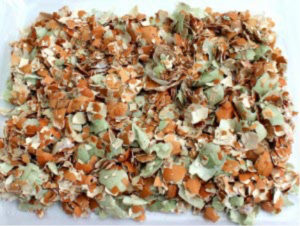
(Credit: http://www.naturallivingideas.com/tips-recipes-for-homemade-organic-fertilizer/)
Instead of throwing away some of your greatest fertilizers, consider using them in your garden.
Combine with yard waste for example straw, grass clippings after mowing, and dry leaves. This will add nitrogen to the soil.
Do NOT use cardboards or papers. Some misinformed people will inform you to use these, but they’re truly loaded with chemicals that are nasty and don’t include nutrients for plants. In the event that you don’t have enough leaves afterward try sawdust or something like that.
Additionally, don’t use coffee grounds alone as they could be highly acidic even for acid loving plants. Add them to microbe-rich waste from the lawn and make a good combination for the compost. Using coffee grounds with leaves and some lime and wood ash is another great way to balance your compost.
Use this fertilizer with roses, hydrangeas, and azaleas (plants who love more acidity) for maximum advantage.
Eggshells add a ton of calcium to your land which can fortify cell construction of your plants when blended with fertilizer.
Fish water is another great idea for upcycling from your fish tank. Instead of emptying it in grass or the toilet, pour around your garden.
Compost Fertilizer
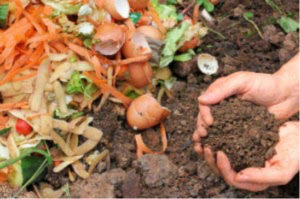
(Credit: http://www.naturallivingideas.com/tips-recipes-for-homemade-organic-fertilizer/)
Compost is a great, traditional fertilizer. And it will help recycle waste!
It may be a fine procedure as you can’t let it sit too long—it will start to lose nutrients. And also you can’t stop the process soon, especially if you’re using manure— it needs time to kill pathogens. Generally, you have a need for a ratio of carbon to nitrogen that lands close to 30:1 and 40:1
Rodalesorganiclife.com has an astounding informative article on making compost with animal waste. This is an important read if you’re going to be making this type of fertilizer.
Vinegar Fertilizer
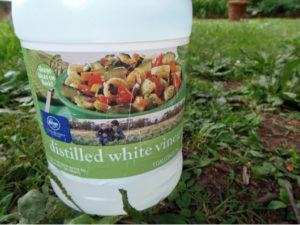
(Credit: https://fthmb.tqn.com/6fjrSxFnzw05kIQL3izHSiZG-8A=/768×0/filters:no_upscale()/about/vinegar-56a338955f9b58b7d0d0fcc6.jpg)
Vinegar is good for acid-happy plants like other plants, berries, and the roses I mentioned in the upcycling fertilizer.
This fertilizer is affordable and natural! So it’s a great go-to.
Simply combine about a Tablespoon of white vinegar per one gallon of plain water.
There are lots of approaches to use Epsom salts in a garden, all which are amazing. I’m merely covering what I like to do with these fertilizers myself, so if you have a different way that’s acceptable.
Naturallivingideas.com advocates using it as a foliar spray, including spraying the fertilizer straight to the plant leaves for absorption. I find this to be easy and effective.
Epsom Salt Fertilizer
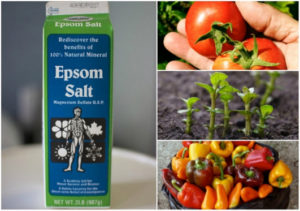
Epsom salts (hydrated magnesium sulfate) have magnesium and sulfur, two nutrients that help with photosynthesis, root development, and acid generation among other things.
Epsom salts are a great all-over fertilizer for your garden and it’s great for nourishing ground that is depleted.
This is a fertilizer that is versatile and amazing. Use it on your broccoli, cabbages, onions, tomatoes, roses, and peppers. It will help veggies be even sweeter and healthier -tasting, plus it helps plants grow stronger and blossom.
Fish Fertilizer
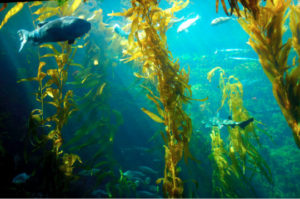
This is all about as real as it gets. Time to get grimy.
Fish intestines, heads, bones, it all … they’re a great fertilizer as they are quite high in phosphorous, potassium, amino acids, and nitrogen.
You usually have to assemble fish parts through the year (freeze them so they last) so that you can make a lot in the spring.
Beets, broccoli, Brussel sprouts… they all thrive with this specific fertilizer.
The typical mix is 1 part fish to 2 parts water and place it in an air-tight container like a bucket. Leave it in a bright spot (away from you house…it’s not nice). You generally have to stir the concoction every number of days. After a couple weeks, it will be ready to apply to your garden.
Normally, about 3 gallons covers 100 sq. feet.
